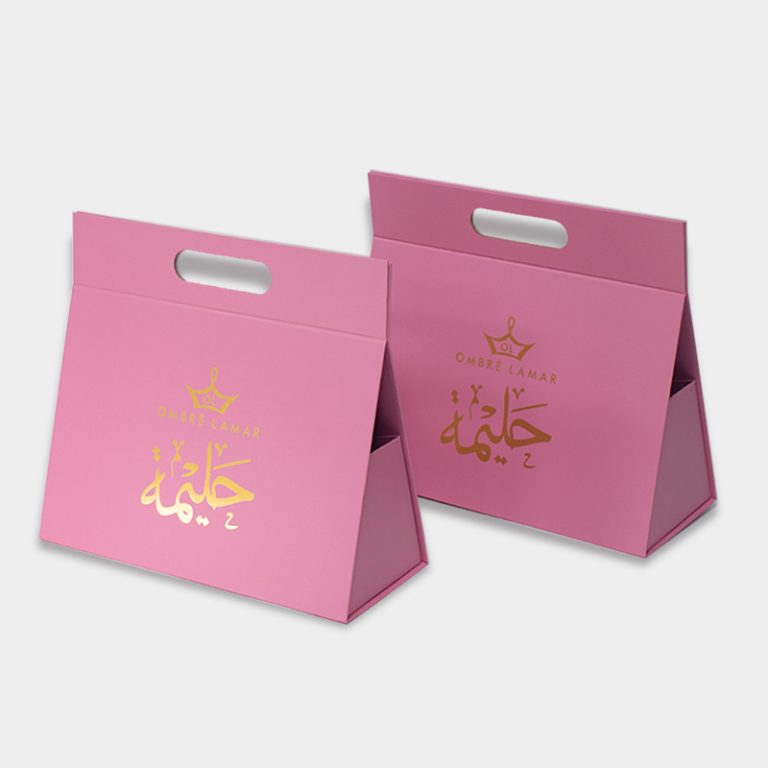The Silent Power of JinShun Packaging: How a Light Luxury Jewelry Brand Tripled Its Average Order Value
“President Lin, our new product has been knocked back down to square one again.” Wang Li, Marketing Director of EQGLEAM Jewelry, placed a stack of market research reports on the desk, her voice tinged with exhaustion. “Consumers say our designs are almost identical to those at the neighboring counter—why should they pay 30% more?”
Lin Yan rubbed her temples. This was the third such feedback she’d received this month. As the founder of an emerging domestic light luxury jewelry brand, she was well aware of the industry’s challenges—homogenized designs and cutthroat price wars. The jewelry displayed in mall showcases had become so indistinguishable that even her own employees struggled to tell them apart without logos.
“We’ve invested so much in product upgrades…” Lin Yan gazed out the window, where an advertisement for an international luxury brand glared back at her from the opposite building. “Why aren’t consumers willing to pay a premium for our products?”
I. The Overlooked Value of Packaging
The turning point came three weeks later at the Shenzhen Gift Fair. Lin Yan paused at the JinShun Gift Box booth, captivated by a display of packaging samples—these weren’t just ordinary boxes but “unboxing experience devices” filled with ceremony.
*”Did you know 90% of high-end consumers keep packaging that feels luxurious?”* Qing feng He, the structural engineering lead at JinShun Gift Box, picked up a double-door sample. “Just like the ‘pop’ of a champagne cork is part of the enjoyment, packaging is an inseparable part of the product.”

The sample he demonstrated would later change EQGLEAM’s fate: Pulling the gold-edged ribbon triggered a crisp “click” from the magnetic closure. The double doors slowly unfolded, revealing a meticulously arranged display of jewelry on gold-foiled inserts. This was the unboxing ritual that EQGLEAM’s premium line had been missing. Most surprisingly, this exquisitely compact box was designed to lay flat—a seven-panel folding structure with dual-side panels that snapped into shape instantly. After removing the jewelry, it could be easily reassembled into a storage box or desktop display.
“This is called ‘secondary touchpoint’ design,” Qing feng He explained. “Every use reinforces brand recall—it’s like customers voluntarily becoming your long-term advertisers.”
It hit Lin Yan: EQGLEAM had always treated packaging as a cost, while top-tier brands turned it into a value multiplier.
II. The Magic of Packaging as Experience
After finalizing the collaboration, JinShun Gift Box conducted an in-depth audit of EQGLEAM. The findings were staggering:
- 68%of consumers in the same price range doubted product authenticity due to subpar packaging.
- 82%of female users said they would share a unique unboxing experience.
- Only 7%kept ordinary jewelry packaging.
“This isn’t just a packaging change—it’s a complete reinvention of the consumer experience,” Qing feng He drew an experience curve on the whiteboard. “From the shipping box to the product reveal, we’re designing 12 ‘wow moments‘.

The execution was meticulous, with seven rounds of prototyping. To achieve the perfect magnetic “snap,” the team tested five magnet combinations. For seamless double-door closure, they tweaked the structure three times. The ribbon was handcrafted with dual-layer gold edging, embedded into the box for an elegant unboxing feel with just the right resistance. Even the opening angle was ergonomically calibrated for one-handed elegance.
The most revolutionary innovation was overcoming the limitations of small side-panel folding boxes—just 3cm thick. Using patented folding tech, it could withstand shipping shocks while allowing customers to transform it like high-end origami. JinShun’s engineers developed custom die-cutting to ensure every fold locked perfectly.
“It’s 40% more expensive than standard packaging, but worth it,” Lin Yan insisted in internal meetings. “We’re not selling 925 silver—we’re selling the ‘wow’ when the box opens.”
III. The Viral Effect of Social Currency
On launch day, EQGLEAM’s customer service was flooded—not with complaints, but with unboxing videos. One customer even filmed the ribbon unfurling in slow motion, captioning it: “This is what my New Year’s gift deserves.”
JinShun Gift Box’s pre-engineered social triggers ignited:
- A #EQGLEAMUnboxingChallengetrended on Douyin, hitting 1M+ views in 3 days.
- Xiaohongshu users repurposed the boxes into mini vanity casesand display cabinets.
- Some admitted buying the product just for the box, commenting: “The packaging alone is worth it—the jewelry is a bonus.”
The results spoke for themselves:
- Average order value skyrocketed from ¥400 to ¥1,200, while sales grew 65% YoY.
- Repeat purchase rates tripled, with 30% of returning customers citing packaging as the draw.
- User-generated content saved 30% of annual marketing spend.
“Now we understand what ‘pricing power’ really means,” Wang Li toasted JinShun Gift Box at the quarterly celebration. “Same materials, but customers happily pay 3x more—because they’re not just buying jewelry, but the heartbeat of unwrapping a gift.”
IV. The Lesson of Packaging Leverage
At a recent industry summit, Lin Yan shared her insights: “Many ask how we calculate packaging ROI. I counter: What’s the cost ratio of an iPhone’s box? How much brand equity does Tiffany’s blue box generate?”

She displayed a before-and-after:
- Left: EQGLEAM’s old packaging, invisible on shelves.
- Right: JinShun Gift Box’s redesign—even empty, it radiated luxury.
*”This is the silent salesperson, declaring 24/7: ‘People who use this brand deserve the best.'”*
After the event, JinShun Gift Box’s founder, Holly, fielded dozens of partnership requests. Her response? “Don’t ask what the box holds—ask what brand dreams it can carry. When your packaging becomes social currency, premium pricing follows naturally.”
Now, in any EQGLEAM store, you’ll see the same scene: Customers carefully unbox their purchases, caressing every detail like art—and always reaching for their phones to capture it. The question that once haunted Lin Yan now has a new answer:
It’s not that consumers won’t pay more—it’s that brands rarely give them a reason to feel proud doing so.












